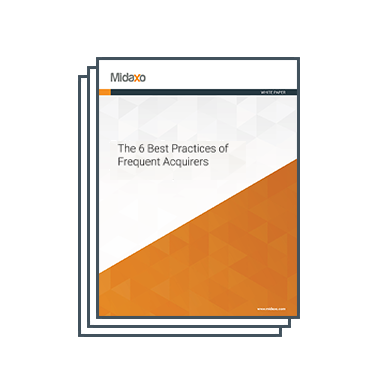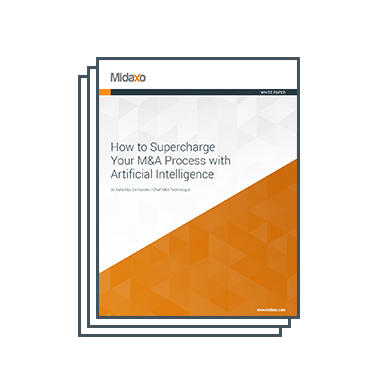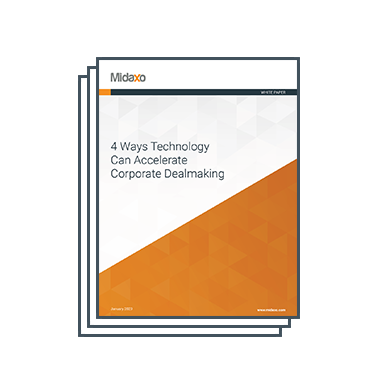In the complex world of M&A, there’s no one-size-fits-all approach to tracking and leveraging Key Performance Indicator (KPI) data. But one thing is certain: successful acquirers understand that M&A KPIs have a lifecycle.
What does that mean in practice? Simply put, the KPIs that matter most will shift depending on where you are in the lifecycle of your business or deal. As priorities evolve, so should the metrics you’re focused on. Yet, many M&A teams struggle to pivot, often reporting- and relying on the same KPIs long after they’ve outlived their relevance.
In this post, we’ll break down the KPI lifecycle, explore common KPI use cases, and share best practices for ensuring your team is tracking the right metrics at the right time.
KPI Lifecycle Stages for M&A and Beyond
- Define your KPIs – You want to select the right indicators based on your organization’s goals and strategies. It would be easy to think that all the M&A KPIs that need to be defined have been defined for ages. But as corporate objectives change, new KPIs arise. A sustainability metric may become increasingly important, for instance.
- Collect & Measure Data – Make sure you’re using appropriate tools to measure and track your M&A KPIs. This is much easier if your teams are managing deal data in a single, end-to-end platform.
- Analyze & Interpret Data – Evaluate performance and identify areas for improvement. Examine values and trends periodically.
- Assess, Optimize, & Improve KPIs – Adjust what KPIs you’re tracking based on your deal stage and business goals. How well do your KPIs align with current performance objectives?
Common KPI Use Cases
- Deals closed vs. M&A goals
- Pipeline status vs. M&A goals
- Value realized vs. M&A goals
- Quality of pipeline/targets
- Synergy tracking success to deal thesis
- Process Optimization
- Actual realized deal value vs. M&A inorganic growth goals — the “gold standard”
Best Practices to Support M&A KPI Lifecycles
Benchmark historic performance vs. current performance. Historical knowledge is critical to KPI management, which means data needs to be stored in one central location so valuable analytics can be produced, compared and learned from.
Fight against data fragmentation. Data fragmentation is a common pitfall in many areas of the M&A process. It is especially crippling when it comes to long term KPI tracking. Just as a central location is needed to benchmark historical performance vs. current performance, it is also necessary for long term tracking and cohort analysis.
Use the data to monitor and modify your behavior. Analytics and KPIs are only as good as your ability to recognize the need to monitor and modify your behavior based on them. You must understand what the numbers mean, how they stack up against your thesis, and what needs to change going forward. Without thoughtful reflection and behavior modification, why bother tracking?
Develop best practices and plays related to KPIs. It is vital to have a repeatable process related to KPI tracking and modifying, especially if you are doing multiple deals a year. Just like M&A practitioners have best practices and playbooks related to due diligence and integration, KPI tracking and lifecycle management need a playbook as well.
Don’t forget non-financial KPIs. Metrics such as talent retention, as well as other metrics related to culture, are just as important as financial KPI’s when it comes to deal success. AI has the potential to be especially useful with this type of data, as it is often helpful with evaluating non-structured data such as text.
How Midaxo Can Help with KPI tracking and management
An end-to-end platform for your deals is the not-so-secret “secret weapon” to mastering M&A KPIs.
- Central location for all data: Best practices highlight that a central, secure location for all data is essential for productive, thoughtful KPI tracking and garnering valuable insights to guide future behavior.
- KPI reporting: With the click of a button, via real-time customizable analytics, Midaxo can produce broad and detailed reports on KPIs.
- KPI dashboards: A dashboard for relationship management supports the deal lead’s efforts to maximize critical relationships. These relationships are the bedrock of crafting a successful, mutually beneficial deal.
- Synergy tracking: Midaxo’s synergy tracking features empower the CFO and/or Integration Team Lead to make informed, thoughtful decisions that will result in a successful deal.
Conclusion and Further Reading
KPI tracking and metric analysis are critical for gaining a true understanding of your health as a company and as an acquirer. However, accurate and meaningful KPI tracking is often more complex than it appears. Siloed execution can lead to errors that undermine both tracking accuracy and value creation. Equally problematic is the failure to regularly reassess and adjust which KPIs are being tracked as priorities shift over time.
M&A practitioners must recognize which KPIs are most important at each stage of their business or deal lifecycle—and how certain KPIs may be interconnected, signaling the need to pivot focus. Too often, teams become hyper focused on a fixed set of “must-track” KPIs, losing sight of the fact that every business, target, and strategic goal is unique—and subject to change.
For a further exploration of how to identify and leverage the right KPIs at the right time, watch our webinar The KPIs that Drive M&A Success. It’s packed with expert insights to help your team stay agile and aligned as you pursue better deal outcomes.





